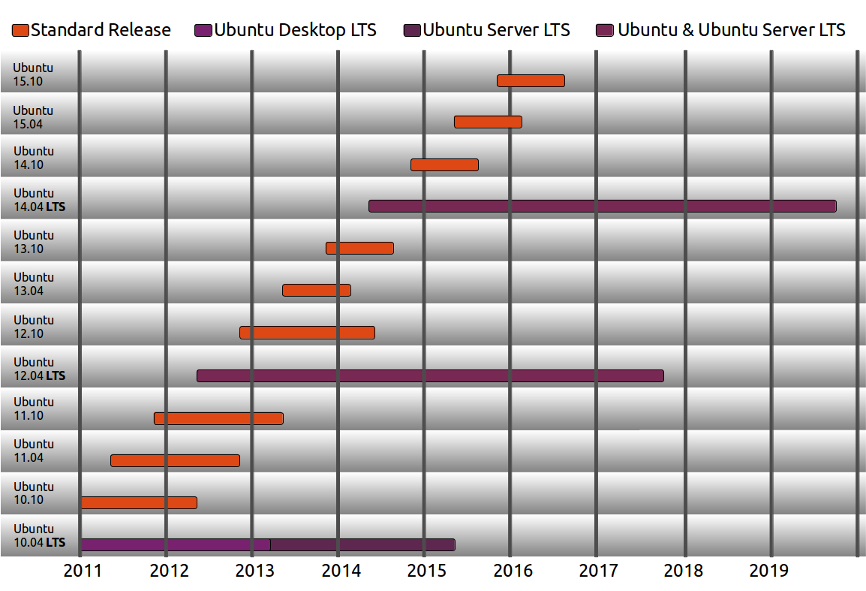What's the meaning of version numbering of Ubuntu?
Ubuntu follows a regular 6 month release cycle. The version numbers are formatted in Y.MM (10.04: April, 2010). Every two years there is a Long Term Support (LTS) version release which will be officially supported for two more years.
The last LTS was 12.04, the current LTS is 14.04, and the next LTS is 16.04 - the three releases between these LTS releases culminate into the next LTS, ideally viewed as "6-month baby releases that piecemeal towards the next LTS".

Typically after each non-LTS release a point release is made for the current LTS designed to maintain stability and backport changes keeping an LTS release 'supported' These are denoted as a third version number (12.04.[1-4]).
This chart and more information can be found on the Ubuntu Wiki: LTS article.
Ubuntu releases on a time based schedule. At the time Ubuntu was started the GNOME project had already established a regular release schedule every 6 months, usually September and March. So Ubuntu's schedule was "when GNOME releases, plus a little bit more to put it into Ubuntu."
The way it worked out is Ubuntu released on Aprils (hence the .04) and Octobers (.10). And it's been that way ever since, with the exception for 6.06, which had to be delayed until June due to some delays.
As it ends up releasing in the spring and fall fits nicely in the calendar and there's never been a need to shift the schedule.
Also worth noting: the first number is the year of the release.
Yes. The first number is the year the distribution was released (so 09 means 2009), and the second number is the month it was released. Therefore, the upcoming 10.10 version will be released in October 2010.